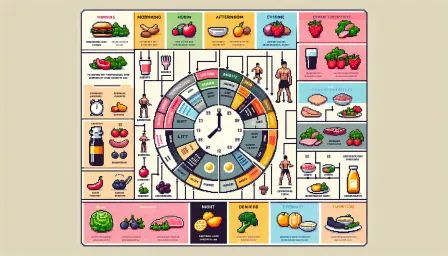How Food Journaling Can Help Manage Emotional Eating: Proven Strategies

Discover how food journaling can assist in managing emotional eating. Explore proven strategies and tips to help you gain control over your eating habits.
Introduction
Emotional eating is a common challenge that many individuals face. This behavior often involves eating in response to emotions rather than hunger. For people struggling to control emotional eating, food journaling can be an effective tool. In this article, we'll explore how food journaling and emotional eating are connected and how you can use this method to manage your eating habits.
Understanding Emotional Eating
Emotional eating involves using food to cope with emotions such as stress, anxiety, sadness, or even boredom. This can lead to overeating, weight gain, and an unhealthy relationship with food. Identifying the triggers of emotional eating is the first step toward managing it.
The Power of Food Journaling
What Is Food Journaling?
Food journaling involves recording everything you eat and drink throughout the day. This can include details such as portion sizes, timing, and the context in which the food was consumed. Beyond just tracking food, a comprehensive journal also notes your emotional state and the reasons behind your eating.
Benefits of Food Journaling
Food journaling offers several benefits for those looking to manage emotional eating:
- Awareness: It helps you become more aware of your eating patterns and the emotions that trigger eating.
- Accountability: Writing down what you eat can make you more accountable to your dietary choices.
- Pattern Identification: Over time, you can identify trends and patterns in your eating behavior.
- Emotional Insight: Documenting your emotions alongside your food intake helps link mood and food consumption.
Proven Strategies for Effective Food Journaling
1. Be Honest and Detailed
Accuracy is crucial when food journaling. Write down everything you eat and drink, including snacks and beverages. Be honest about portion sizes and avoid the temptation to omit details that might seem insignificant.
2. Track Emotions and Situations
A key aspect of food journaling for emotional eating is recording your emotions and the situations surrounding your meals. Are you eating because you're hungry, or are you trying to soothe an emotional trigger?
3. Review and Reflect Regularly
Set aside time regularly to review your journal entries. Reflect on the patterns and triggers you notice. This can help you understand the emotional cues that lead to eating and guide you in developing healthier responses.
Integrating Food Journaling with Other Strategies
Mindful Eating
Mindful eating involves paying full attention to the experience of eating and can be complemented by food journaling. This practice can help you recognize when you are physically hungry versus emotionally triggered to eat.
Seek Professional Support
If emotional eating is a significant issue, consider seeking support from a dietitian, therapist, or support group. Professionals can provide additional strategies and guidance to support your journey.
Conclusion
Food journaling is a powerful tool that can help you manage emotional eating by raising awareness, providing accountability, and identifying patterns in your behavior. By incorporating detailed, honest entries and reflecting regularly, you can gain insight into the emotional triggers behind your eating habits. Combined with mindful eating and professional support, food journaling can guide you towards healthier, more intentional eating habits. Give it a try and take the first step towards managing emotional eating effectively.



























